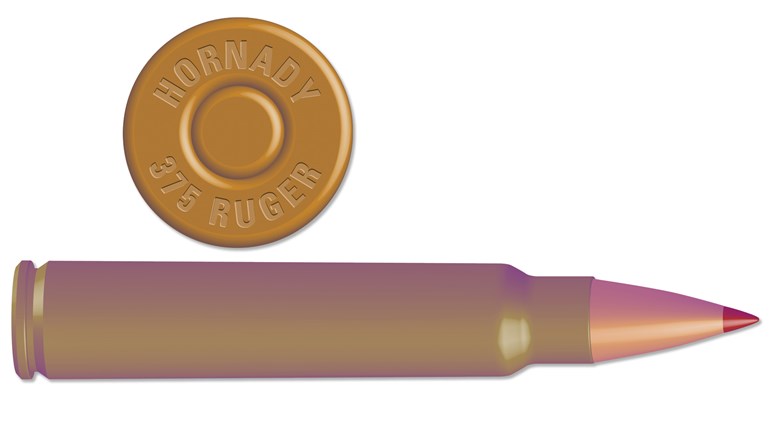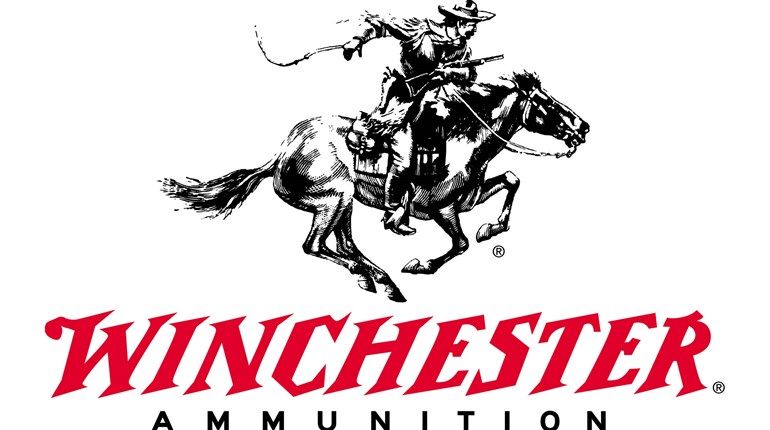
Every hunter who packs a .30-’06 Sprg. into the game fields knows that the traditional rule is to shoot 150-grain bullets while hunting game the size of deer and pronghorn antelope and to switch to 180-grain projectiles for larger game. However, with today’s controlled-expansion bullets, that rule may have to be changed to shooting only 150-grain bullets at big game from antelope to elk.
The result of my son’s elk hunt two years ago sealed the switch to lighter bullets for me. At first light, Brian spotted 20-plus elk moving across a sagebrush flat toward the timber above. As he hurried across the flat to intercept them, the elk crossed 200 yards below, and a six-point bull at the back of the bunch stopped to change directions. The boom of Brian’s first .30-’06 Sprg. shot was followed by a crack of the bullet hitting the elk in the shoulder. The second shot also hit the bull in the shoulder, and it fell.
The two Barnes 150-grain Triple-Shock X-Bullets had plowed through the lower part of both of the animal’s shoulder bones and stopped under the hide on its far side. Few obstacles are tougher on a bullet than elk bones. Yet both the recovered Triple-Shocks weighed 128 grains, shearing off two of their four petals. Their expanded frontal diameters were 0.575 inches and 0.770 inches with slightly more than half an inch of their shanks remaining intact—perfect!
Shooters are obsessed with numbers because figures help make sense of the mystery of the variation between different bullets’ trajectory and terminal performance.
The trajectory advantage goes to 150-grain bullets in the contest between 150- and 180-grain bullets fired from the .30-’06 Sprg. The highest velocity I ever attained from a 150-grain bullet from a .30-’06 Sprg. with a 22-inch barrel was 3,080 fps. The top speed from a 180-grain bullet was 2,770 fps. At those speeds, and with both bullets sighted in 2-inches high at 100 yards, the difference in drop between 150- and 180-grain bullets is 2.82 inches at 300 yards, 5.73 inches at 400 yards and 9.69 inches way out at 500 yards. That’s a significant advantage for the 150s at 400 yards. At 500 it’s more theoretical because nobody should shoot at an unwounded big-game animal that far away.
The Benefit Of 150s
The 150-grain bullets also pretty well carry the same energy as 180-grain bullets. The 150s actually pack about 100 ft.-lbs. more energy at the muzzle than do the 180s. At 200 yards, the 180s do nudge ahead in the energy department; however, at 500 yards that additional power is only 87 ft.-lbs. in the 180’s favor.
But foot-pounds of energy do not kill big game. A bullet’s ability to halt the function of an animal’s vital organs is what dependably kills big game. That’s where today’s 150-grain bullets shine.
As You Like
An assortment of 150-grain bullets is available to provide a lethal punch. Ordinary bullets with lead cores and copper-alloy jackets work just fine on deer and antelope. Bullets like the Sierra flat-base spitzer (Pro-Hunter), Hornady InterLock, Remington Core-Lokt and other similar cup-and-core bullets fired from the .30-’06 Sprg. have filled freezers with venison for decades. I put a .30-’06 Sprg. Winchester factory-loaded 150-grain Power Point bullet clear through an antelope buck last fall, and with minimal meat damage.
A bullet design that controls and/or limits upset upon impact is a good idea for shooting larger game. Bullet manufacturers achieve this performance several ways.
Swift’s A-Frame and Nosler’s Partition incorporate a dividing wall in the bullets to stop expansion about halfway down their length. Plus the A-Frame’s front core is bonded to the jacket.
If maximum expansion and high weight retention are desired, bullets with the lead core and copper or copper-alloy jacket bonded together are the best choice. Examples of this include the Hornady InterBond, Nosler AccuBond and Swift Scirocco. I shot a bull elk broadside through both lungs a few years ago with my .30-’06 Sprg. loaded with 150-grain Swift Sciroccos. The elk staggered a few steps on rubbery legs and fell over. The Scirocco had destroyed both lungs and stopped against the hide on the far side. The bullet had mushroomed nearly flat to a diameter of 0.715 inches, yet retained 135 grains of its original weight.
The deep-penetrating bullets are of uniform composition constructed with a hollow forward section with lengthwise scores and a solid shank. When the petals on these bullets peel open along their path through an animal, their expanded front portion is quite large; however, their long shank remains intact to keep the bullet plowing through the animal. A few of these bullets include the all-copper Barnes Triple-Shock X-Bullet, and the gilding metal (95 percent copper and 5 percent zinc) Hornady GMX and Nosler E-Tip.
Preston Bunker of Barnes Bullets says many hunters are choosing the Barnes Tipped Triple-Shock X-Bullet because its plastic tip helps initiate bullet expansion at longer range somewhat better than the original Triple-Shock’s hollow point. “Besides,” he added, “that sharp plastic tip looks cool.” Not to mention, the tip increases the ballistic coefficient for flatter trajectories and less wind deflection.
Handloading
A variety of propellants work well for handloading the .30-’06 Sprg. with 150-grain bullets. Propellants listed in the Select Loads chart fairly well-filled the Nosler cases and were compressed when the bullets were seated. Holding a propellant charge in a fixed position like that provides a more even burn to the powder that results in lower variation in velocity. The velocities of the loads recorded in the chart had standard deviations of 20 with IMR4350, 16 with Norma URP, 10 with W760 and 9 with Ramshot Hunter. Relatively fast-burning propellants such as IMR4064 and H-4895 fail to completely fill a case and slosh around, settling any which way and resulting in a wider spread of velocity.
Because of the Nosler E-Tip’s long bearing surface, Nosler states the E-Tip bullets should be initially loaded with the starting load listed in the “Nosler Reloading Guide 6” and to not exceed the middle load given for other Nosler bullets of the same weight. Using a middle load of 55.0 grains of Ramshot Big Game, the 150-grain E-Tips had an average velocity of 2,864 fps at a distance of 9 feet from the muzzle of the 22-inch-barreled Browning X-Bolt rifle. That speed is about 70 fps slower than other Nosler bullets and the same powder charge fired from a 24-inch barrel.
I usually seat bullets for hunting rounds about 0.05 inches from contacting the rifling. That bullet seating depth typically provides good accuracy and always assures that an unfired cartridge will easily extract from the chamber. Barnes suggests that amount of bullet setback for its Triple-Shocks. Nosler suggests seating E-Tip bullets in cases 0.050 to 0.100 inches short of contacting the rifling lands for the best accuracy. I split the difference and seated the E-Tip 150s 0.070 inches from contact. That cartridge length—3.28 inches—provided good accuracy with the E-Tips.
Hunters should amend the unwritten law they’ve obeyed for years and try 150-grain bullets in the .30-’06 for all big game. They’ll be glad they did when they see how effectively these bullets work on game from antelope to elk.





































